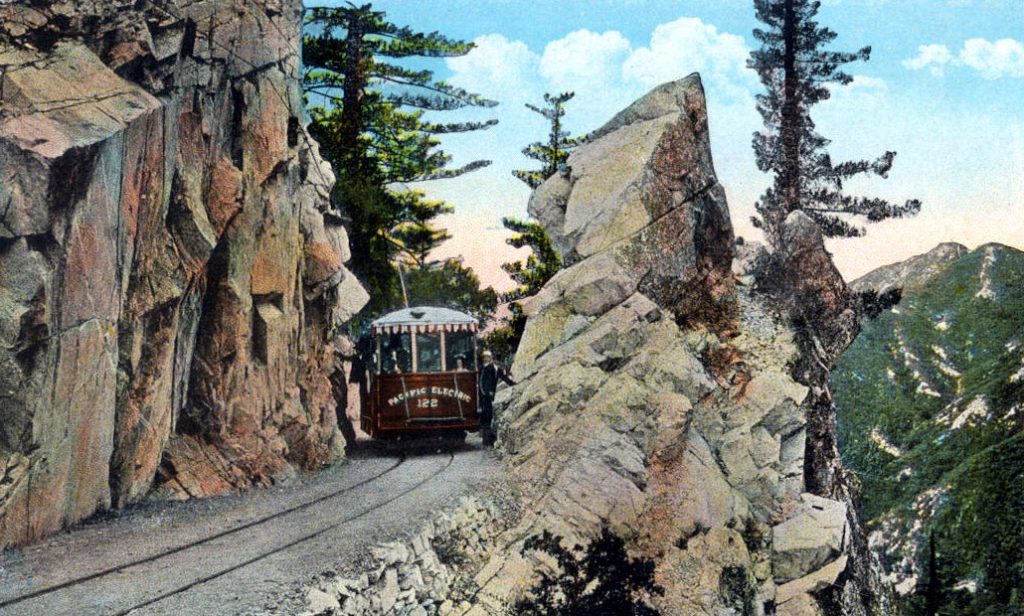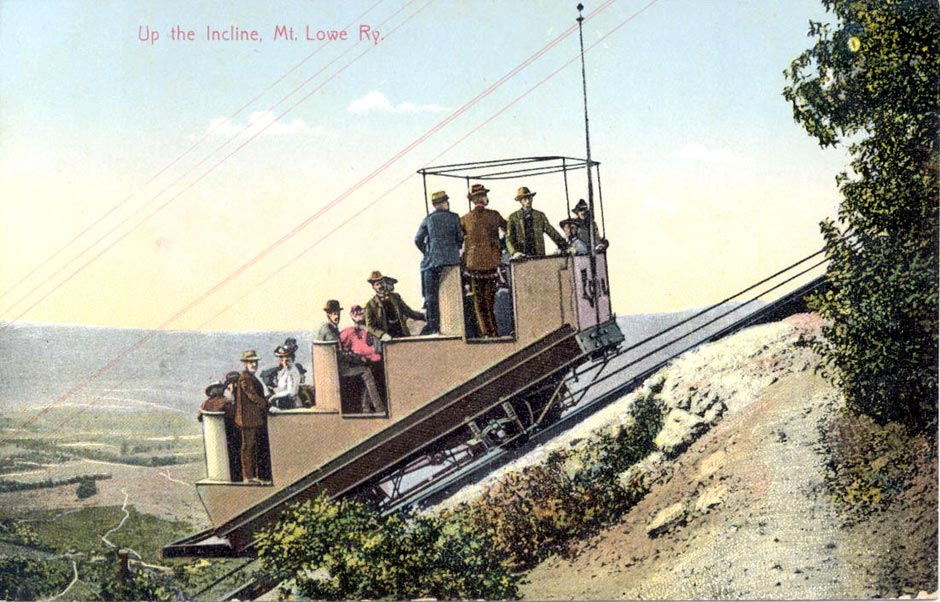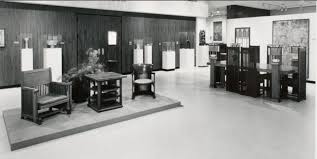by Kathy Hoskins
When Aunt Julia sat on her sleeping porch to enjoy the warm winter sun, she had a spectacular view of one of Southern California’s most popular tourist attractions of the day: the Mt. Lowe Railway.

The railway that took travelers from Altadena to the base of Mt. Lowe in the San Gabriel Mountains was the project of Prof. Thaddeus S.C. Lowe. Professor Lowe was famous for, among other things, perfecting the use of hot air balloons in military engagements during the Civil War. Some considered him the founder of the Air Force. Lowe came to Southern California in 1888 and founded a gas company and an ice company He organized and became president of a bank in 1890 and moved to Pasadena. Soon after he arrived in Los Angeles, he met David J. Macpherson, a brilliant young engineer with an idea for transporting people from the city to the nearby wilderness on a, “railway to the clouds.” The Mt. Lowe Railway was born.
After several years searching for the appropriate route, and after unsuccessfully attempting to obtain the rights to build the railway on Mt. Wilson, Lowe and Macpherson settled on Echo Mountain as their destination and began construction on April 12, 1892. On July 4, 1893, the Mt. Lowe Railway opened for business. The railroad was an engineering marvel for its day. Climbing the side of Echo Mountain from a hotel pavilion straddling Rubio Canyon in Altadena, riders were treated to spectacular views that extended all the way to the Pacific Ocean.
Over the next few years a “White City” (the White City at the Columbian Exposition in Chicago had established a fashion for the name) was built at, the top of the railway, and included a hotel, a zoo, a casino, an observatory, the world’s biggest searchlight and many hiking trails.
Tourists came up from hotels in Los Angeles and Pasadena, many riding in TalIy-Ho carriages pulled by teams of matching horses. They disembarked from these at Altadena Junction at, the intersection of Lake Avenue and Calaveras Street. There they took electric trolley cars that carried them up Lake Avenue and east to Rubio Canyon, where they boarded the funicular cars which carried them to the top of Echo Mountain.

The experience was expanded in 1895 when the Alpine Division was built to take passengers from Echo Mountain four miles farther up to the base of Mt. Lowe (originally called Oak Mountain, and renamed by Prof. Lowe with the cooperation of his friend Andrew McNally, the mapmaker). The ride crossed such features as Horseshoe Curve, Circular Bridge and Granite Gate in its way to its final destination at The Alpine Tavern. One rider described the experience as “four appalling miles of alternating happiness and horror, ecstasy and dread.” The Alpine Tavern offered libations and overnight accommodations in the Tavern or in surrounding tent cabins.
Building the railroad had exhausted all of Prof. Lowe’s financial resources. It was expensive to maintain, and Lowe had taken it heavily into debt. After he lost his stake in 1897, the railway was ultimately acquired by Henry Huntington’s Pacific Electric Railway in 1902. Lowe died penniless in 1913.
The hotels and other structures in Rubio Canyon, Echo Mountain and Alpine Tavern were destroyed over the years by fire severe weather. The railway continued to operate until its closure in 1937, ending what was the Disneyland of its day.
For the last year the Altadena Historical Society has been working on a website that will tell the story of the Mt. Lowe Railway and showcase their collection of artifacts. It will be available later this year.



Leave a Reply